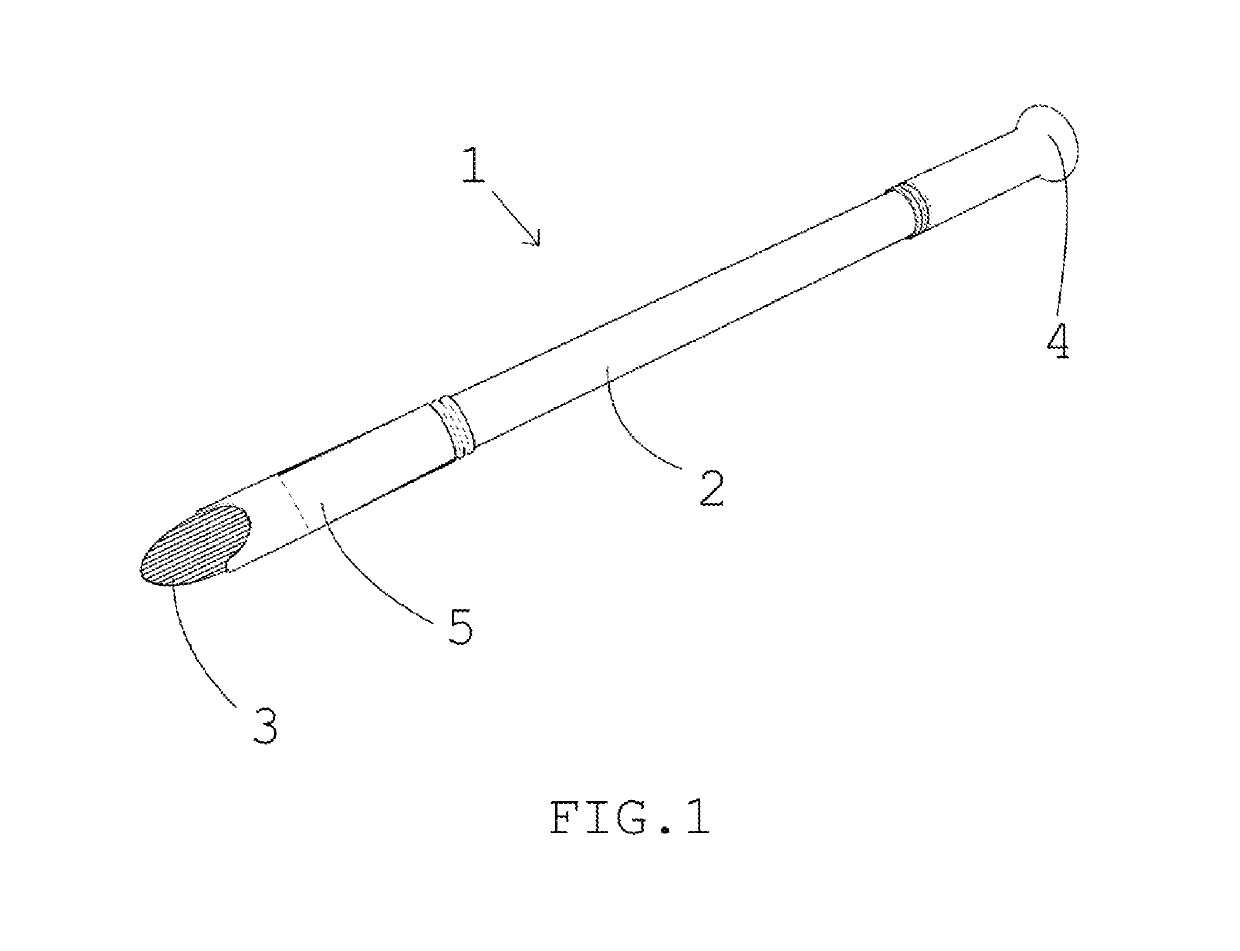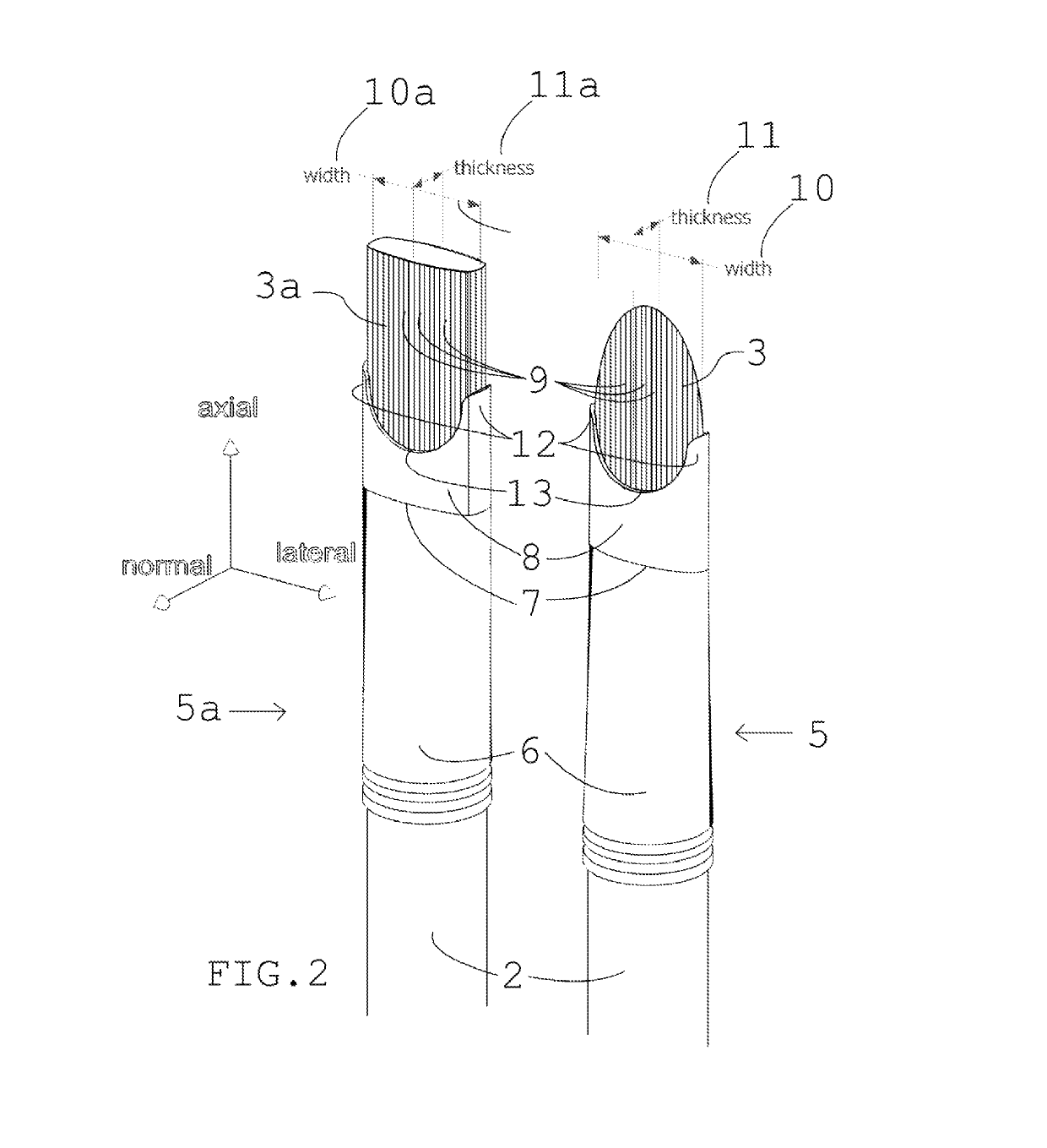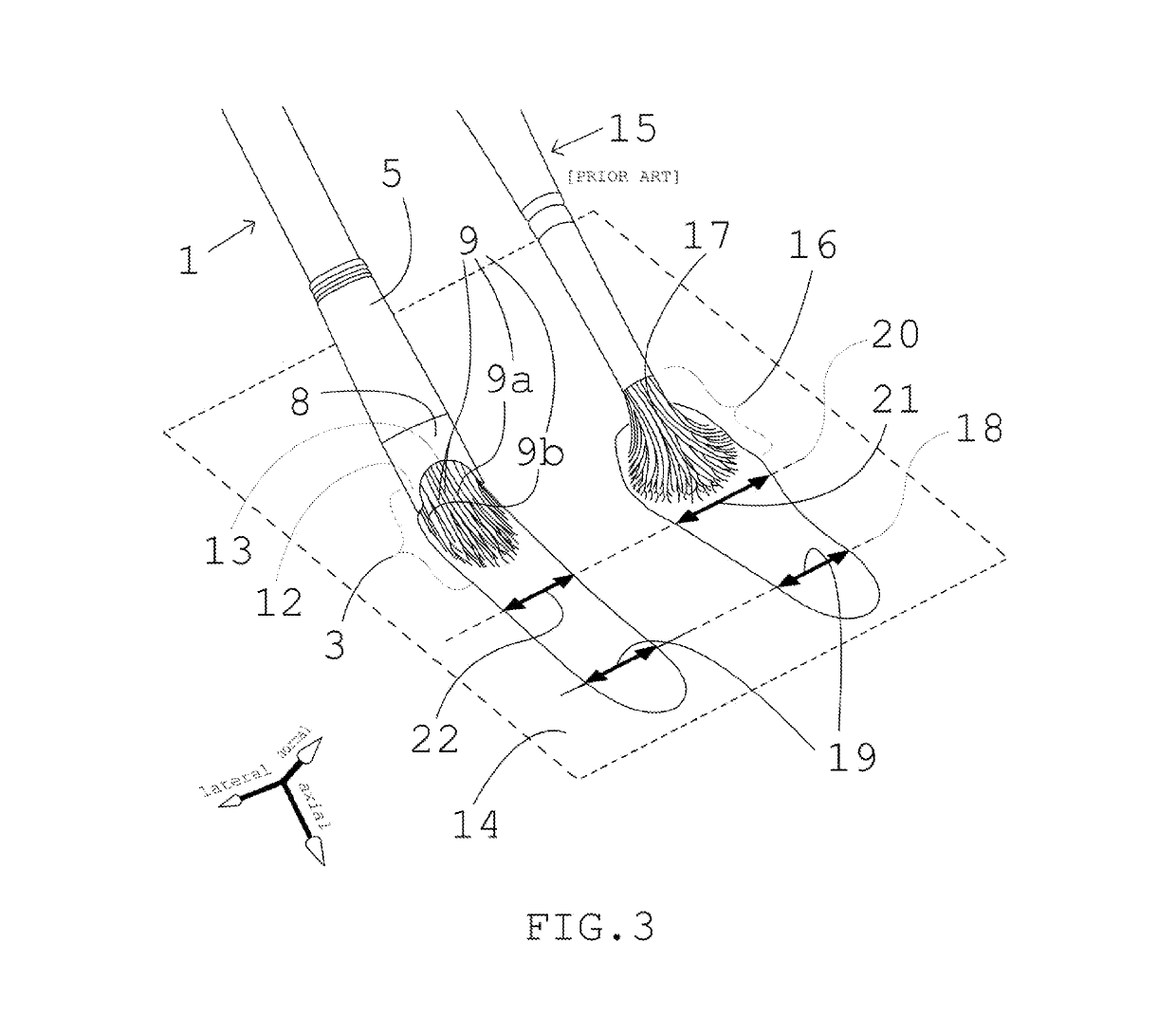Lateral support brush
a lateral support and brush technology, applied in the field of brushes and paintbrushes, can solve the problems of reducing the risk of painting moving to objects, reducing the effectiveness of counterbalance and other anti-splay features of brushes, and reducing the risk of paint moving to objects, so as to achieve greater control, less eccentric load, and optimized balance
- Summary
- Abstract
- Description
- Claims
- Application Information
AI Technical Summary
Benefits of technology
Problems solved by technology
Method used
Image
Examples
Embodiment Construction
[0021]The drawings depict some useful and novel embodiments of the present invention, but do not limit the present invention to any particular displayed embodiment.
[0022]Referring now to FIG. 1, an embodiment of the present invention, a counterbalanced lateral support paintbrush (1), is shown. It has an elongate handle (2), with a tuft (3) of bristles at one end, and a counterbalancing weight (4) at the other end. A ferrule (5) connects the tuft (3) with the handle (2). In FIG. 1, the tuft (3) is a rounded tuft, an exemplary mode of tuft shape contemplated for the counterbalanced lateral support paintbrush (1).
[0023]Referring now to the embodiment shown in FIG. 2, two alternative ferrules and tufts of the present invention are shown, a ferrule (5) similar to that of FIG. 1, which has a tuft (3) that is rounded in shape, and a flat-tuft ferrule (5a), which has a flat-tuft (3a). Both the ferrules (5 and 5a) are exemplary modes, but do not depict all contemplated shapes of the embodime...
PUM
 Login to View More
Login to View More Abstract
Description
Claims
Application Information
 Login to View More
Login to View More - R&D
- Intellectual Property
- Life Sciences
- Materials
- Tech Scout
- Unparalleled Data Quality
- Higher Quality Content
- 60% Fewer Hallucinations
Browse by: Latest US Patents, China's latest patents, Technical Efficacy Thesaurus, Application Domain, Technology Topic, Popular Technical Reports.
© 2025 PatSnap. All rights reserved.Legal|Privacy policy|Modern Slavery Act Transparency Statement|Sitemap|About US| Contact US: help@patsnap.com



